TOM RAWORTH
As When
A Selection
EDITED WITH AN INTRODUCTION
BY MILES CHAMPION
 dedicated to the memories of
dedicated to the memories of
Pat Lansdowne, Peter Gilpin and Maril ParoliniAcknowledgements
The poems in this selection are in rough chronological order, and are taken from the following publications:
The Relation Ship (London: Goliard Press, 1966);
The Big Green Day (London: Trigram Press, 1968);
Lion Lion (London: Trigram Press, 1970);
Moving (London: Cape Goliard Press; New York: Grossman Publishers, 1971);
Pleasant Butter (Northampton, MA: Sand Project Press, 1972);
Act (London: Trigram Press, 1973);
Back to Nature (Bexleyheath, Kent: The Joe DiMaggio Press, 1973);
Cloister (Northampton, MA: Sand Project Press; San Francisco: Zephyrus Image, 1975);
The Auction of Olsons Head (San Francisco: Zephyrus Image, 1975);
Common Sense (San Francisco: Zephyrus Image, 1976);
The Dresden Codex (Berkeley, CA: Poltroon Press, 1976);
The Mask (Berkeley, CA: Poltroon Press, 1976);
Logbook (Berkeley, CA: Poltroon Press, 1977);
Sky Tails (Cambridge: Lobby Press, 1978);
Four Door Guide (Cambridge: Street Editions, 1979);
Nicht Wahr, Rosie? (Berkeley, CA: Poltroon Press, 1979);
Lvre de Poche (Durham, NC: Bull City, 1983);
Heavy Light (London: Actual Size Press, 1984);
Tottering State: Selected and New Poems 19631983 (Great Barrington, MA: The Figures, 1984);
Curtains (Durham: Pig Press, 1986);
Lazy Left Hand (London: Actual Size Press, 1986);
Visible Shivers (Oakland, CA: O Books, 1987);
All Fours (London: Microbrigade, 1991);
The Vein (Great Barrington, MA: The Figures, 1991);
Clean & Well Lit (New York: Roof Books, 1996);
Meadow (Sausalito, CA: The Post-Apollo Press, 1999);
Landscaping the Future (Bologna: Porto dei Santi, 2000);
Collected Poems (Manchester: Carcanet Press, 2003);
Caller and Other Pieces (Washington, DC: Edge Books, 2007);
Let Baby Fall (Providence, RI: Critical Documents, 2008);
There Are Few People Who Put On Any Clothes (starring it) (Cambridge: Equipage, 2009);
Windmills in Flames: Old and New Poems (Manchester: Carcanet Press, 2010);
Got On (Oxford: _ Press, 2011); and
Structure from Motion (Washington, DC: Edge Books, 2015). Boomerang and Doctor Mends were published in
Vort (1972); Hearing, Never Mind and Well were published in
The Milk Quarterly (1974); Surfing the Permafrost through Methane Flares was published as a trading card by Fact-Simile Editions (2014). Dark Senses is in memoriam Barry Hall (193395) and Out of a Sudden is in memoriam Franco Beltrametti (193795). My thanks to Tom Raworth for answering my questions so patiently and generously, and to Val Raworth, and Tom, for reading what follows with such thoroughness; any errors that remain are surely mine. My thanks also to David Ball, James Cummins, Thomas Evans, Alastair Johnston, Sam Ladkin, Kit Robinson, David Southern and Geoffrey Young, and to Michael Basinski and James Maynard at The Poetry Collection of the University Libraries, University at Buffalo, The State University of New York. MC, January 2015
Contents
If there is something of which we are dispossessed, it is those things we have made, that we believe we have made: they are things that never belong to us, not before, during, or after.
Jacques Rivette in conversation with Serge Daney, 1990
Introduction
Tom Raworths poetry is one of the great and pure pleasures of the contemporary literary landscape. It is writing that gets its work done quickly and cleanly, is neither didactic nor difficult, and stimulates the mind as much as the eye and ear. The present selection spans Raworths writing of some fifty years, from the preternaturally wise Raworth himself has steered admirably clear of the factionalism that so often characterises the poetry world, having no use for such markers as us and them. That he has been hard to pin down over the years is evidenced by the various labels critics have attempted to stick on his work: mid-Atlantic, Black Mountain, New York, Surrealist, Minimalist, Language, Californian. Thomas Moore Raworth was born on 19 July 1938 in Bexleyheath, south-east London. His mother, Mary Raworth, ne Moore, grew up in Dublin in a large Republican family that lived on the North Circular Road in a tenement building whose basement room was occupied by Sean OCasey.
Raworth grew up in a semi-detached redbrick house on Avondale Road in Welling, on the border between London and North West Kent. Both parents were Roman Catholichis father had convertedand Welling had a large Catholic population at the time: there were May Processions through the town and several Irish families living nearby.damped by the teenage need to reject all forms of culture as manifested in his parents tastes. He took up the piano and read a lot of science fiction. Raworth left St Josephs in 1954 during his first term as a sixth-former and got a job as a claims clerk with the Law Accident Insurance Society on the Strand. A succession of short-lived jobs followedpacking jewellery and canned goods, selling high-end china at Thomas Goode in Mayfair, labouring on a construction siteuntil, in late 1955, he failed the army medical for National Service when a hole was found in his heart. This was sewn up the following year at Brompton Hospital by Sir Russell Brock, one of the pioneers of open-heart surgery (Raworth was the third person in Britain to undergo the procedure and is its longest survivor).
After a few weeks convalescence he started work at Eros Films on Wardour Street, booking films into cinemas around the country. Jazz (modern British: Joe Harriott, Tubby Hayes, Phil Seamen) and clothes (Italian suits and Fred Perry) were interests, and evenings were spent going to clubs and hanging around with friends. In 1957 Raworth took a job at the Wellcome Foundation, a pharmaceutical manufacturer on Euston Road, where he met Ken Lansdowne, a sailor recently returned from Suez. They worked alone in a small basement room, ostensibly typing lists of drugs returned. Left to his own devices for much of the day, Raworth took long walks across London and embarked on a collaborative secret-agent novel (parts of which would later appear in his prose book A Serial Biography) with another workmate, Nigel Black. Together they livened the largely empty workday by sending chunks of Beckettian prose through Wellcomes internal mail system (Raworth had read Becketts Dante and the Lobster and Echos Bones in the first issue of Evergreen Review, published that year).
One day, after workmen started bricking up the basement doorway, oblivious to the typists below, Raworth and Lansdowne were retrieved and promoted to the transport department. Raworths interest in poetry was reawakened after buying the second issue of Evergreen Reviewthe landmark San Francisco Scene issuefrom Tony Godwins Better Books on Charing Cross Road. He bought the issue for Ralph J. Gleasons article on San Francisco jazz, but also found writing by Allen Ginsberg, Jack Kerouac, Jack Spicer and Philip Whalen, among others. Around this time he looked at Dada, Surrealism and their precursors, finding Apollinaire, Jarry, Rimbaud and Schwitters of interest, and began to browse the Charing Cross bookshops more regularly. Better Books and nearby Zwemmers were occasional sources of interesting magazines: Botteghe Oscure, Migrant, New Departures.
In summer 1959 Raworth met Margaret Valarie Murphy in a lift on his lunch break and they were married a few weeks later events Raworth regards as the most fortunate of his life (Val remains the only person whose tastes and opinions he trusts). The following year they moved into two damp basement rooms on Amhurst Road in Hackney. That December Raworth read Edward Dorns poem Vaquero in
Next page
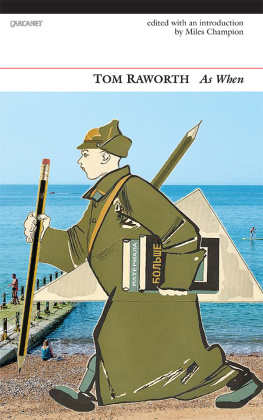
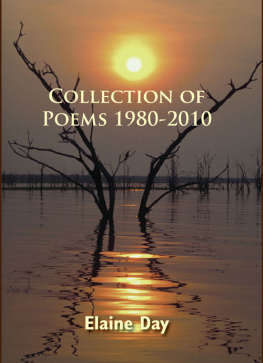
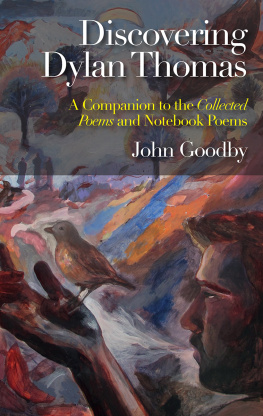




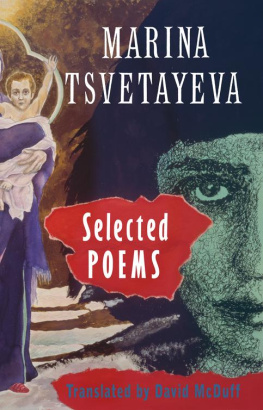
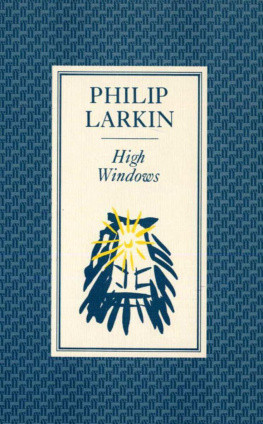
 dedicated to the memories of
dedicated to the memories of